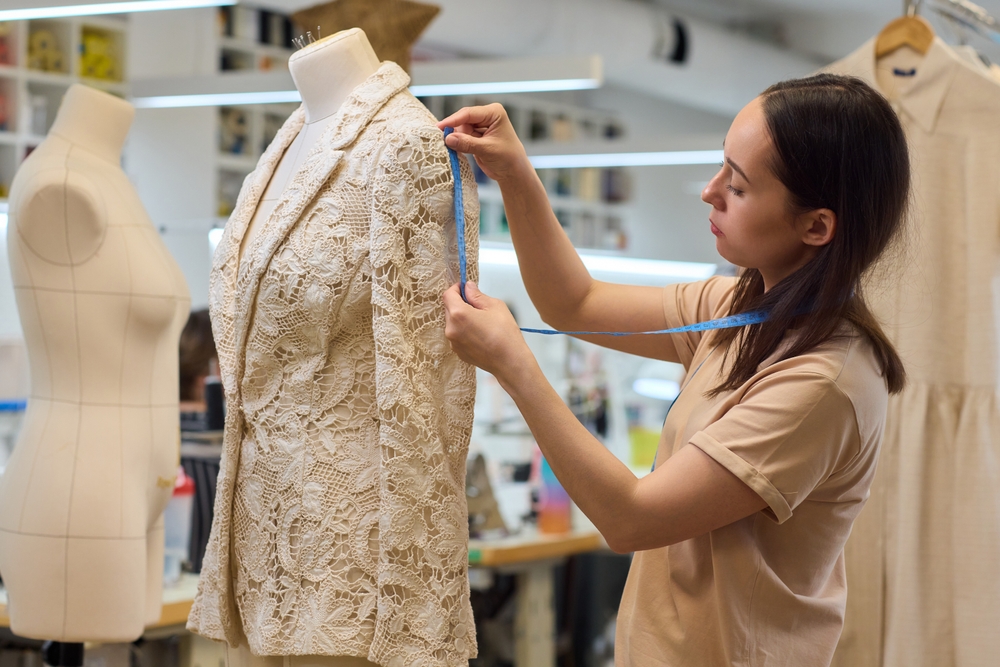Slow Fashion Rebellion: Crafting a Sustainable Wardrobe
Tired of the constant churn of fast fashion? A quiet revolution is taking place in closets across the globe. Consumers are increasingly embracing slow fashion, a movement that prioritizes quality, sustainability, and ethical production over trendy, disposable clothing. This shift is not just about style; it's a radical reimagining of our relationship with what we wear. Read below to discover how slow fashion is reshaping the textile industry and consumer behavior.

This approach represents a significant departure from the disposable clothing culture that has dominated the fashion industry for decades. Fast fashion, characterized by cheap, trendy clothes that move quickly from catwalk to store, has led to overconsumption, poor working conditions, and environmental degradation. In contrast, slow fashion advocates for a more thoughtful, holistic approach to clothing production and consumption.
The Environmental Impact of Fashion
The fashion industry is one of the largest polluters globally, second only to oil. Fast fashion’s rapid production cycles and low-quality materials contribute significantly to this problem. According to the United Nations Environment Programme, the fashion industry produces 10% of global carbon emissions and is the second-largest consumer of water worldwide.
Slow fashion aims to mitigate these environmental impacts through various means. This includes using sustainable materials, implementing circular economy principles, and reducing waste throughout the production process. By encouraging consumers to buy fewer, higher-quality items, slow fashion also helps reduce the volume of clothing that ends up in landfills.
Ethical Production and Fair Labor Practices
Beyond environmental concerns, slow fashion also addresses the human cost of clothing production. Fast fashion’s demand for cheap, quick production has led to exploitative labor practices in many parts of the world. Slow fashion, by contrast, emphasizes fair wages, safe working conditions, and transparency in the supply chain.
Many slow fashion brands work directly with artisans and small-scale producers, preserving traditional craftsmanship and supporting local economies. This approach not only ensures better working conditions but also helps maintain cultural heritage and skills that might otherwise be lost to industrialization.
The Rise of Conscious Consumerism
The slow fashion movement is part of a broader trend towards conscious consumerism. Today’s consumers, particularly millennials and Gen Z, are increasingly making purchasing decisions based on ethical and environmental considerations. A 2020 study by First Insight found that 73% of Gen Z consumers are willing to pay more for sustainable products.
This shift in consumer behavior is driving change across the fashion industry. Even large retailers are beginning to incorporate sustainable practices and offer more durable, ethically-produced clothing options. However, true slow fashion goes beyond just using organic cotton or recycled materials; it involves a fundamental rethinking of our relationship with clothing.
Embracing Slow Fashion in Everyday Life
Adopting a slow fashion lifestyle doesn’t mean completely overhauling your wardrobe overnight. Instead, it’s about making more mindful choices and gradually building a wardrobe of well-made, versatile pieces that will last for years. Here are some ways to incorporate slow fashion principles into your life:
-
Buy less, choose well: Invest in high-quality, timeless pieces that will last longer and stay in style.
-
Care for your clothes: Proper care and maintenance can significantly extend the life of your garments.
-
Shop secondhand: Thrift stores and vintage shops are treasure troves of unique, sustainable fashion.
-
Support ethical brands: Research and support companies that prioritize sustainability and fair labor practices.
-
Learn to repair and upcycle: Basic sewing skills can help you mend and customize your clothes, giving them new life.
The Future of Fashion
As awareness of fashion’s environmental and social impacts grows, the slow fashion movement is likely to gain even more traction. However, challenges remain. The higher upfront cost of sustainably-produced clothing can be a barrier for some consumers, and the convenience of fast fashion is hard to resist in our fast-paced world.
Despite these challenges, the slow fashion movement continues to grow and evolve. Innovations in sustainable materials, circular economy models, and digital technologies are creating new possibilities for ethical, environmentally-friendly fashion. As consumers become more educated and demanding, the industry will be forced to adapt, potentially leading to a more sustainable and equitable future for fashion.
The slow fashion rebellion is more than just a trend; it’s a fundamental shift in how we think about and consume clothing. By embracing slow fashion principles, we can reduce our environmental impact, support ethical labor practices, and cultivate a more mindful, sustainable relationship with our wardrobes. As this movement gains momentum, it has the potential to transform not just the fashion industry, but our entire consumer culture.




